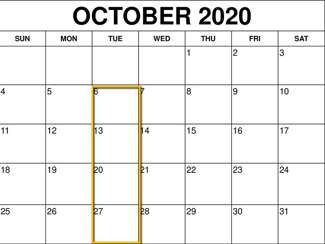Most bars are doing inventory to complete their ordering and to calculate their liquor cost. The problem with focusing on these two goals is that it often prevents you from drilling down to evaluate the performance of individual products by comparing what was poured vs. sold for every item at your bar (a process we call Level 3 inventory).
If you’re not reaching Level 3 inventory with your efforts, you’re missing out on an important opportunity to improve your profitability. In these situations, you’re doing ¾ of the work and receiving about ¼ of the benefits from the process. It’s much better to put in a little more work and get the most out of your inventory efforts.
Level 3 inventory is one of the easiest ways to improve your profitability. During the tough economic times created by the pandemic, this increased profitability will be crucial to the ongoing success of your business.
In order to get the accurate data necessary to achieve Level 3 inventory, you need to make sure the counting process is done properly. The following tips will set you up for success in this critical aspect of the bar inventory process.
Count on a Set Day of The Week
 Most bars tend to do weekly or biweekly inventory counts. The right frequency will depend on your sales volume and the unique needs of your bar. Regardless of the frequency, it should always be done on a set day of the week. There are several reasons to stick to a consistent counting day:
Most bars tend to do weekly or biweekly inventory counts. The right frequency will depend on your sales volume and the unique needs of your bar. Regardless of the frequency, it should always be done on a set day of the week. There are several reasons to stick to a consistent counting day:
- It’ll allow you to avoid a situation where your counter has to come in on their day off (your counter is more likely to rush through the process when they’re trying to enjoy a day off)
- It allows you to make sure inventory is counted as close to the time orders are placed, which will help ensure you have the right amount of product on-hand and avoid over-ordering
Clear All Other Tasks Off Your Counter’s Schedule
Your counter needs to be laser focused on inventory on counting days. They shouldn’t be running the pre-shift meeting or responsible for managing the floor during the count. Make sure your counter gets a two-hour window where they’re undisturbed and can focus on counting bottles. This will reduce the risk of errors.
Don’t Count at Night
We’ve found that when we work with bars that insist on performing their inventory counts at night, they consistently achieve lower quality, less accurate results than bars that count early in the morning. Counting at night creates a variety of problems that reduce the likelihood your staff will perform this task accurately. No one wants to hang around the bar for an extra couple of hours when they’re tired after a long night shift in order to count inventory. When you create this situation, you’re setting your counter up for failure.
The best way to get a thorough, accurate count is to perform the task when your counter is alert and has the time necessary to focus all of their energy on it. That time of the day is early in the morning before the bar gets busy.
Always Complete the Counting Process in a Single Day
Inventory requires comparing your previous count to your current count. To do this, you need to know:
- How much inventory you have on-hand (your count)
- What was purchased that week (invoices and other purchase information)
- What was sold (POS sales reports)
All of this information has to be integrated into our software before you can get your results. If different people perform the count and reconcile the data several days later, the delay in receiving your results will prevent you from double checking for errors. It will also make it much harder for you to identify trends at your bar.
It’s crucial that the entire counting process is completed in one day to ensure errors can be double checked and identified before results are finalized and you receive your data.
Have One Dedicated Inventory Employee
 Make sure one employee owns the entire inventory process. This includes:
Make sure one employee owns the entire inventory process. This includes:
- Gathering invoices
- Pulling sales reports
- Completing the inventory counts
If you split these tasks among several employees, you’re making an already complex process even more complicated. This will make it much harder to find and correct errors.
Bar-I Can Help You Get the Most Out of Your Inventory Efforts
At Bar-i, we’re focused on helping you use your inventory efforts to make informed decisions about your bar’s processes. This is achieved by generating highly detailed, accurate reports from every inventory audit. When your counts are performed accurately, we can tell you exactly what is missing down to the serving. We’ll use this information to make recommendations that will help you ensure you’re capturing as much money as possible for the products you’re serving.
Please contact Bar-i today to schedule a free consultation. We serve bars and restaurants nationwide from our offices in Denver, Colorado.


-1.png)